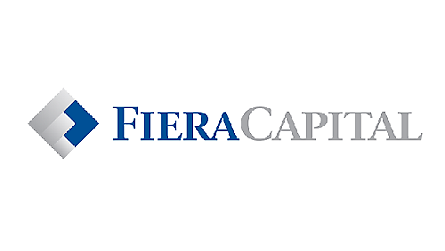Overview
Overview
NYLI Fiera SMID Growth Fund seeks to achieve long-term capital growth by investing in a diversified portfolio of common stocks of small and mid-cap growth-oriented companies that are selected for their long-term capital appreciation potential and which are expected to grow faster than the U.S. economy. The Fund invests at least 80% of its net assets in common stocks of small-and mid-cap companies.
A focus on global secular trends
Proprietary investment process combines bottom-up fundamental stock selection with top-down global secular trends.
A dynamic combination
Portfolio construction consists of a dynamic combination of Stable and Emerging Growth companies.
A disciplined approach
A disciplined, consistent and repeatable process over multiple economic cycles.
Performance
Performance
Class A: 5.5% maximum initial sales charge; a 1% CDSC may be imposed on certain redemptions made within 18 months of the date of purchase on shares that were purchased without an initial sales charge. Class I: No initial sales charge or CDSC.
Returns represent past performance which is no guarantee of future results. Current performance may be lower or higher. Investment return and principal value will fluctuate, and shares, when redeemed, may be worth more or less than their original cost. No initial sales charge applies on investments of $1 million or more (and certain other qualified purchases). However, a contingent deferred sales charge of 1.00% may be imposed on certain redemptions made within 18 months of the date of purchase on shares that were purchased without an initial sales charge. Expenses stated are as of the fund's most recent prospectus.
Effective July 24, 2023, the Fiera Capital Small/Mid-Cap Growth Fund (the "Predecessor Fund") was reorganized into NYLI Fiera SMID Growth Fund ("the Fund"). NYLI Fiera SMID Growth Fund has assumed the Predecessor Fund's historical performance. The performance information shown prior to July 24, 2023 is that of the Predecessor Fund, which had a different fee structure from the Fund and did not have sales charge. The historical performance presented prior to February 12, 2018 reflects the performance of APEX Small/Mid-Cap Growth Fund, a former series of The Ultimus Managers Trust (the "Prior Predecessor Fund"). The returns prior to February 12, 2018 are based on the previous performance and actual fees and expenses of the Prior Predecessor's sole class of shares (i.e., the Predecessor Fund's Institutional Class shares, which commenced operations on June 29, 2012).
New York Life Investments has contractually agreed to waive fees and/or reimburse expenses so that Total Annual Fund Operating Expenses (excluding taxes, interest, litigation, extraordinary expenses, brokerage and other transaction expenses relating to the purchase or sale of portfolio investments, and acquired (underlying) fund fees and expenses) for a class do not exceed the following percentage of its average daily net assets: Class A, 1.15%; Class C, 2.05%; Class I, 0.85%; and Class R6, 0.84%. This agreement will remain in effect until February 28, 2026, and thereafter shall renew automatically for one-year terms unless New York Life Investments provides written notice of termination prior to the start of the next term or upon approval of the Board of Trustees of the Fund. Board.
Portfolio
Portfolio
Distribution & Yields
Distribution & Yields
Distributions may be comprised of ordinary income, net capital gains, and/or a return of capital (ROC) of your investment in the fund. Because the distribution rate and the 12-month rate may include a ROC, they should not be confused with yield or income. Please refer to the most recent Section 19 Notice, if applicable, for additional information regarding the composition of distributions. Final determination of a distribution’s tax character will be made on Form 1099 DIV sent to shareholders each January.
Distribution Rate: The distribution rate measures the percentage return in the form of dividends. It is calculated daily by annualizing the most recent dividend distribution and dividing by the daily share price (NAV or POP). If the Fund did not make a distribution as of the latest scheduled distribution date, "N/A" will be displayed.
12-month Rate: The 12-month rate measures the percentage return in the form of dividends. It is calculated monthly by taking the sum of the trailing 12-month dividend payments divided by the last month's ending share price (NAV or POP) plus any capital gains distributed over previous 12 months. If the Fund did not make any distributions over the previous 12 months, "N/A" will be displayed.
The 30 Day SEC Yield is calculated by dividing the net investment income per share for the first 30 days of the month by the offering price per share at the end of that period. The yield reflects the dividends and interest earned during the period, after the deduction of the Fund's expenses. Yield reflects a fee waiver and/or expense limitation agreement without which the 30 Day SEC Yield would have been lower.
Dividend distributions are the distribution of a dividend to mutual fund shareholders as of a certain date. The following Funds declare daily dividends: NYLI MacKay California Muni Fund, NYLI Floating Rate, NYLI MacKay High Yield Muni Bond Fund, NYLI MacKay U.S. Infrastructure Bond Fund, NYLI Money Market, NYLI MacKay New York Muni Fund, NYLI MacKay Short Term Muni Fund and NYLI MacKay Tax Free Bond.
Fees & Expenses
Fees & Expenses
New York Life Investments has contractually agreed to waive fees and/or reimburse expenses so that Total Annual Fund Operating Expenses (excluding taxes, interest, litigation, extraordinary expenses, brokerage and other transaction expenses relating to the purchase or sale of portfolio investments, and acquired (underlying) fund fees and expenses) for a class do not exceed the following percentage of its average daily net assets: Class A, 1.15%; Class C, 2.05%; Class I, 0.85%; and Class R6, 0.84%. This agreement will remain in effect until February 28, 2026, and thereafter shall renew automatically for one-year terms unless New York Life Investments provides written notice of termination prior to the start of the next term or upon approval of the Board of Trustees of the Fund. Board.
Team
Team
Depth and expertise in traditional and alternative strategies.
Fiera Capital Corp. ("Fiera Capital") is a global investment management firm with over 200 investment professionals providing depth and expertise across traditional and alternative investment strategies. Fiera’s boutique structure empowers their investment teams to focus on their core competencies, while providing access to the firm’s deep resources investing.

Sunil M. Reddy
Head of Growth Equity, Lead Portfolio Manager

David Cook
Portfolio Manager & Equity Analyst




